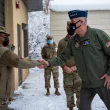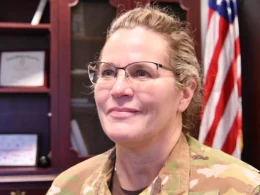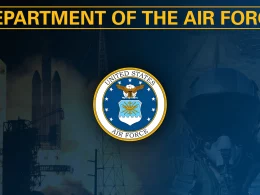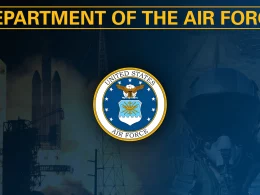ROBINS AIR FORCE BASE, Ga. — Over the past two years, the 1,200 members of Headquarters Air Force Reserve Command, Robins Air Force Base, Georgia, have been working toward a future work environment to execute the mission while ensuring health and safety guidelines are met within work centers.
Due to the work of a small group of action officers from various directorates across the headquarters, the future is now as AFRC is returning to full capacity through a hybrid work environment, reaching phase four assessment and evaluation over the next 12 months.
“As we cannot anticipate when COVID-19 restrictions will be lifted and everyone will have the ability to return to full- or hybrid-work capacity, and we may never get back to 100% on-site capacity, it is our responsibility as leaders to protect our most precious resource – our people,” said Col. Bo Shelton, HQ AFRC’s future work environment champion, assigned to the Directorate of Logistics, Engineering and Force Protection (A4).
“It is imperative that we are proactively protecting the health and safety of our workforce all while evolving as an enterprise – ensuring efficiencies are implemented at all levels to meet mission and readiness requirements. The pandemic gives us the opportunity to modernize our operations by facilitating and implementing change management regarding information technology, ergonomics or facility design that many of our traditional Reservists have used in civilian capacities for years.”
Shelton said in phase four, the working group will assess and evaluate current timelines and milestones to ensure all applicable goals are met. There are specific parameters which were identified by the team to ensure headquarters messaging, supervisory and employee responsibilities, and expectations are identified and clarified to meet performance standards.
Tools are also being developed to have a repository on SharePoint with training tools for supervisors and employees, frequently asked questions and applicable guidance. The team will also use knowledge sessions from both the Directorate of Manpower, Personnel and Services (A1) and the Directorate of Cyberspace and Technology (A6) to support during the transition. There will also be rules of engagement for workplace etiquette – all to ensure AFRC is providing support to the masses during its transition.
The headquarters hybrid work environment occurs at a directorate level where supervisors and employees work together utilizing a combination of on- and off-site work to meet mission demands of the organization.
In a recent survey conducted by the Director of Staff office, 76% of 745 respondents agreed that a hybrid work environment was beneficial to their directorate. There were only 15% who strongly disagreed that a hybrid work environment was beneficial.
“The survey was instrumental in shedding light on what members of the staff were thinking about the hybrid work environment,” said Lt. Col. Dustin Pawlak, AFRC’s former future work environment champion and chief of the director’s action group in A1. “Through employee and supervisor communications, our goal is to make sure everyone understands a hybrid work environment is here to stay and how it’s beneficial to all.”
Over the next 12 months, the cross-function team will continue to assist supervisors and employees on setting clear expectations, provide supervisory tips, offer guidance on how to use Specific, Measurable, Achievable, Relevant and Timely (SMART) objectives and provide collaboration platform training on MS Teams, OneDrive and Jabber, as well as hosting virtual team building and remote learning days.
As part of phases 2 and 3 of AFRC’s consolidated campus construction, there will be collaboration spaces built for internal directorate level small teams or cross directorate functional teams to come together to work on projects outside the work center. Within Building 555, the directorates have already started transforming conference and meeting rooms into shared collaboration space, equipped with conference lines, Desktop Anywhere and dry-boards for teaming exercises.
“The future work environment team has accomplished so many milestones and initiatives since its genesis, it’s impossible to list them all,” Pawlak said. “The improvements we made within our building definitely top the list. For instance, our conference rooms are now equipped with Teams, Zoom and Jabber, and Building 555 has commercial cable installed allowing Wi-Fi access which will ease the collaboration process for our employees.
“Additionally, the Manpower, Personnel and Services Directorate participated in a proof of concept, which allowed the future work environment team to gather vital data and actually see applications in action,” said Pawlak. “We have grown leaps and bounds across the headquarters to support warfighters at the unit level from where we were two years ago when COVID made the majority of us work from home.”
Pawlak said his two years leading the team has been very rewarding.
“If I learned anything it’s that our leaders at the headquarters genuinely care about the people in the command and dedicate their time night and day to find ways to keep us informed and united,” he said.










